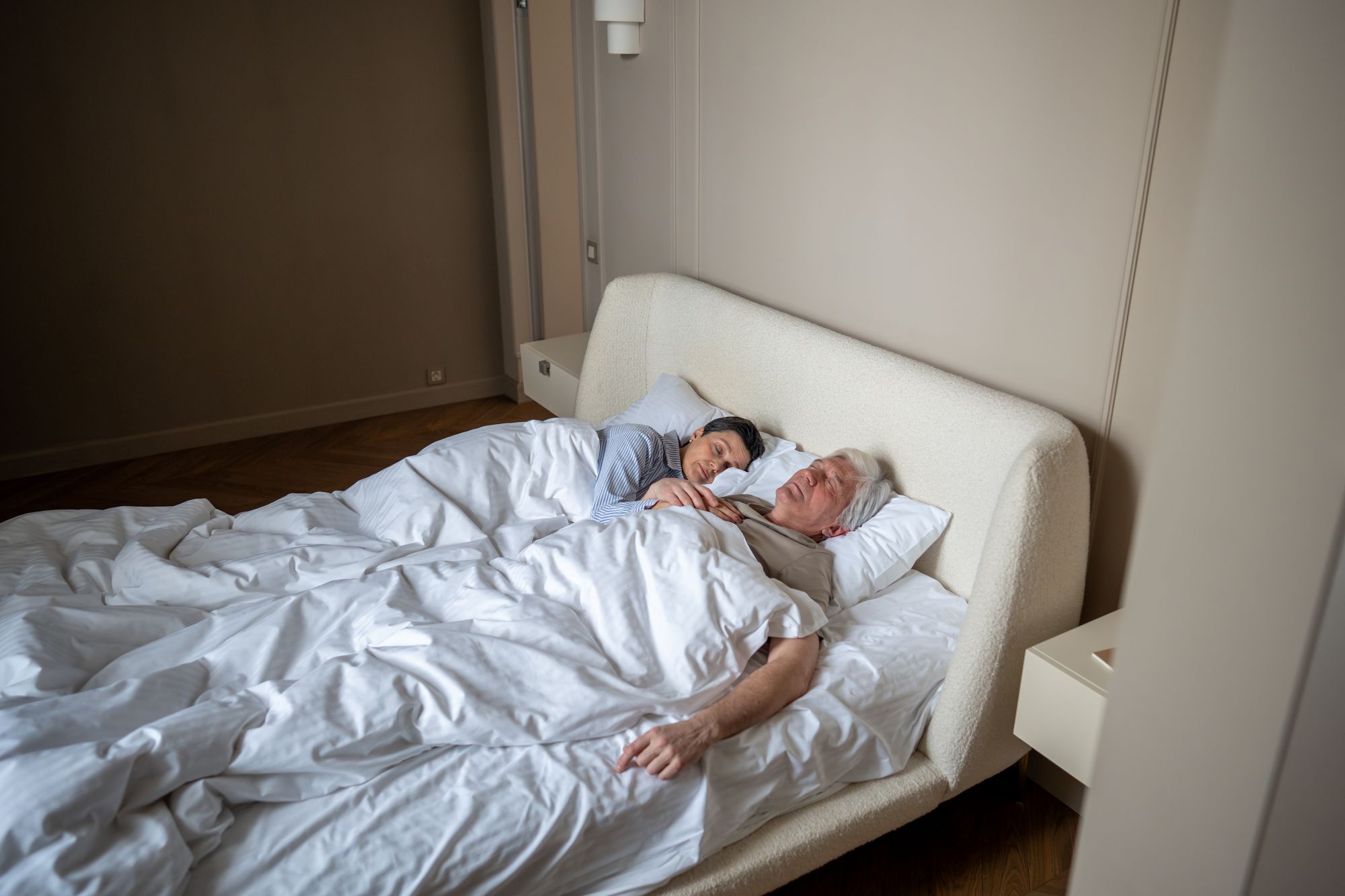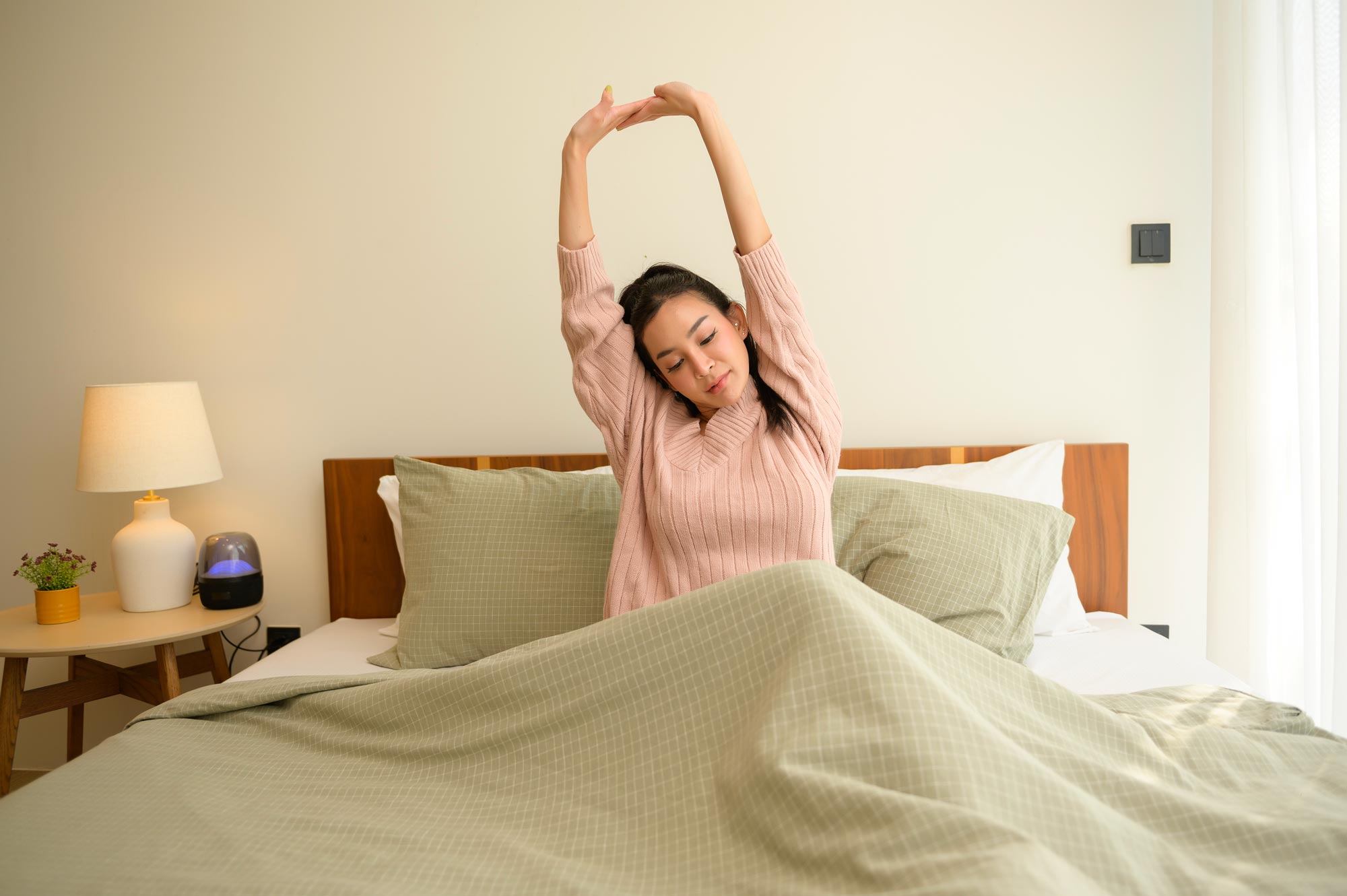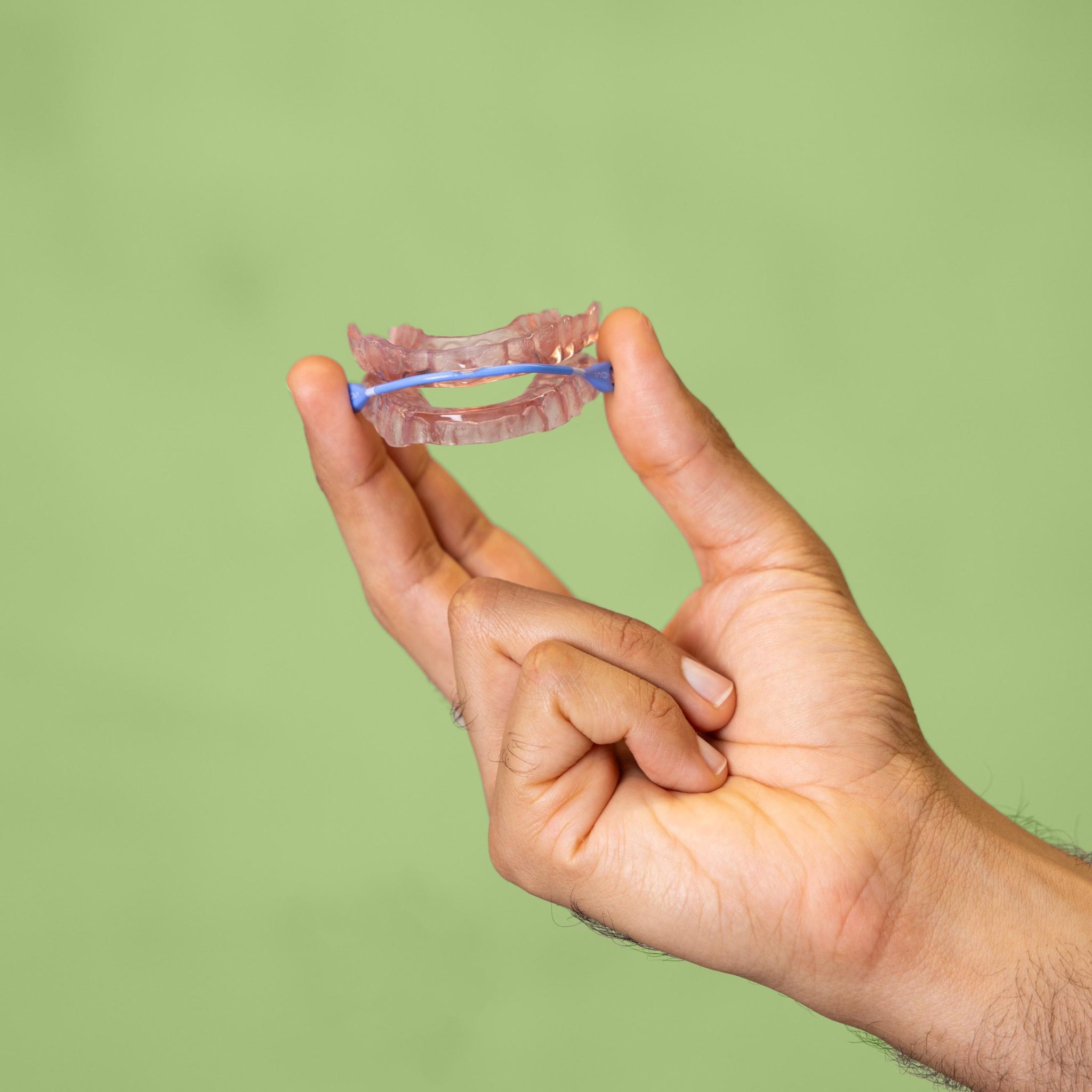What Causes Snoring?
During sleep, the muscles of the throat and tongue relax. If the airway is anatomically narrow, or if soft tissues (like the soft palate, uvula, or lateral pharyngeal walls) encroach on the lumen, airflow becomes turbulent.
That turbulence causes tissues to vibrate, producing snoring. In cases where the narrowing is episodic and severe enough, full collapse may occur, leading to obstructive events known as apnoeas or hypopneas, hallmarks of Obstructive Sleep Apnoea.
Snoring is thus part of a spectrum: some people snore without OSA (sometimes called primary snoring), while others snore as a symptom of OSA.
Snoring Solutions
Snoring is treatable. At Optima Sleep, we offer clinically proven solutions designed for long-term relief and not just quick fixes.
Our custom-fitted Airway Sleep Devices target the root cause of snoring, helping you breathe freely and sleep soundly, night after night.
Snoring Mouth Guard (Sleep Apnoea Mouth Guard)
Often referred to as a snoring mouth guard or sleep apnoea mouth guard, our custom Mandibular Advancement Splints gently reposition the lower jaw to maintain an open airway during sleep.
Comfortable, effective, and expertly fitted, these devices are a trusted alternative to CPAP for mild to moderate sleep apnoea and snoring.
When Snoring Is a Concern
Persistent or loud snoring should be viewed as a red flag. It is often accompanied by:
- Fragmented or nonrestorative sleep
- Excessive daytime sleepiness
- Headaches on waking
- Irritability or cognitive impairment
- Disturbance to your partner’s sleep
For many patients, snoring is the only overt symptom of underlying Obstructive Sleep Apnoea. OSA is characterised by repeated episodes of airway collapse, causing oxygen desaturation and micro‑arousals that fragment sleep architecture.
Accurately determining whether snoring is isolated or a sign of OSA is essential, because untreated OSA carries elevated cardiovascular, metabolic, and neurocognitive risk.
A Precision Approach to Snoring Relief
We treat snoring not with generic cures but with evidence‑based, targeted interventions. Our approach includes:
- A thorough history and airway examination (including dental and anatomical factors)
- Objective sleep assessment, either full polysomnography or home sleep testing
- Quantification of respiratory indices (apnoea‑hypopnoea index, oxygen desaturation index)
- Design of a treatment plan tailored to your airway dynamics, risk factors, and tolerance
Through this process, we can discern whether your snoring is simple or mixed with mild to moderate OSA—and plan accordingly.
Custom Airway Sleep Devices
Our flagship therapy is a custom Mandibular Advancement Splint (MAS), also called an oral airway device. By advancing the lower jaw forward slightly, the device increases tension in the soft tissues and muscles of the upper airway, reducing the likelihood of collapse and vibration.
Clinical research demonstrates that MAS devices significantly reduce the apnoea‑hypopnoea index (AHI) in mild to moderate OSA, and reduce snoring intensity.
In a recent trial, MAS outperformed positional and conservative therapy for snoring reduction in non‑apnoeic snorers. Long‑term adherence is acceptable: after 5 years, over half of patients still using MAS report benefit.
Because our MAS are custom designed via 3D digital workflows, we are able to adjust, refine, and optimise comfort and efficacy over time.
Expertly Designed
Optima Sleep combines advanced science with patient care. Our full service includes:
- Diagnostic airway and dental evaluation
- Home or in‑lab sleep testing
- Digital scanning (no impression trays)
- Custom device fabrication
- Follow‑up, fine tuning, and support
- Coordination with sleep physicians for integrated care
Whether your snoring is simple or intertwined with moderate OSA, our noninvasive therapy is backed by credible evidence and tailored to your airway physiology.
The Benefits of Snoring Treatment
Treating snoring with a custom MAS does more than silence the nightly sound. Evidence shows it can:
- Reduce airway vibration and structural microtrauma
- Improve sleep continuity and increase time in restorative sleep
- Lower the frequency of respiratory events (AHI) in mild to moderate OSA
- Improve daytime alertness, cognition, mood, and neurobehavioral performance.
- Potentially lower nocturnal blood pressure and cardiovascular strain
- Improve quality of life for both the snorer and their partner
Moreover, addressing snoring early may interrupt progression toward more severe OSA and reduce long‑term health risks.
Frequently Asked Questions
Snoring happens when airflow is restricted during sleep, often due to relaxed throat muscles, a narrow airway, or nasal congestion. While common, it is not always benign,especially when linked to conditions like obstructive sleep apnoea.
Yes, snoring can worsen with age. As muscle tone in the airway decreases over time, the likelihood of tissue collapse and vibration increases. Weight gain and other health changes can also contribute to more frequent or louder snoring.
Snoring may last for years if left untreated, often becoming more severe over time and is a primary symptom of Obstructive Sleep Apnoea. However, with proper assessment and treatment, like custom oral appliances, its impact can be significantly reduced or resolved altogether.



